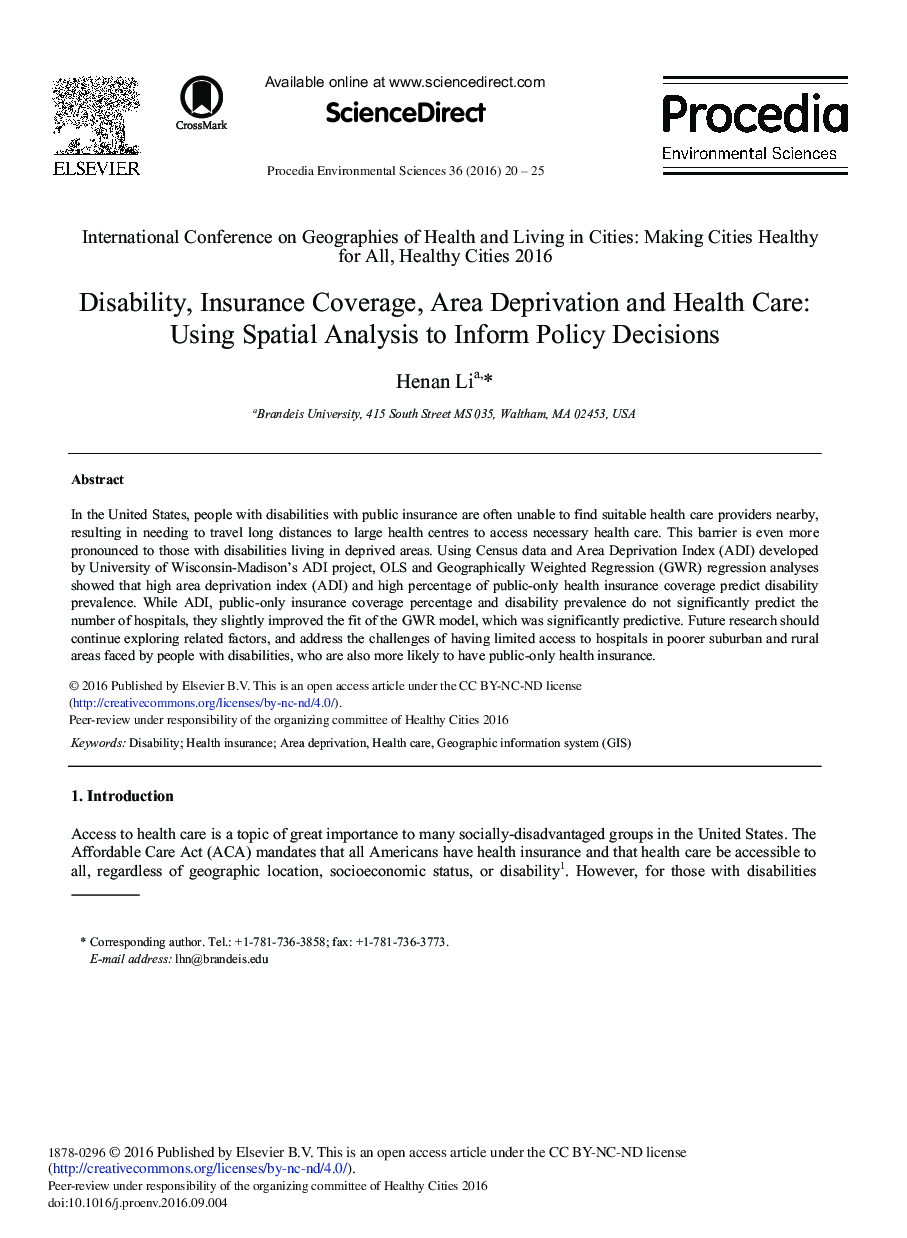| کد مقاله | کد نشریه | سال انتشار | مقاله انگلیسی | نسخه تمام متن |
|---|---|---|---|---|
| 4401318 | 1618608 | 2016 | 6 صفحه PDF | دانلود رایگان |
In the United States, people with disabilities with public insurance are often unable to find suitable health care providers nearby, resulting in needing to travel long distances to large health centres to access necessary health care. This barrier is even more pronounced to those with disabilities living in deprived areas. Using Census data and Area Deprivation Index (ADI) developed by University of Wisconsin-Madison's ADI project, OLS and Geographically Weighted Regression (GWR) regression analyses showed that high area deprivation index (ADI) and high percentage of public-only health insurance coverage predict disability prevalence. While ADI, public-only insurance coverage percentage and disability prevalence do not significantly predict the number of hospitals, they slightly improved the fit of the GWR model, which was significantly predictive. Future research should continue exploring related factors, and address the challenges of having limited access to hospitals in poorer suburban and rural areas faced by people with disabilities, who are also more likely to have public-only health insurance.
Journal: Procedia Environmental Sciences - Volume 36, 2016, Pages 20–25
